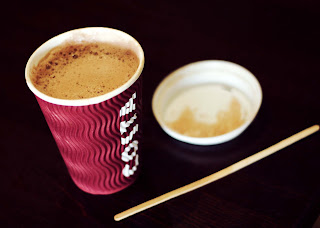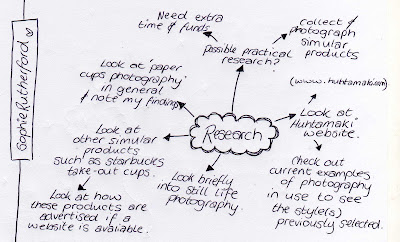I shot my images in the same place as my test shots as I liked the way they came out. I asked permission before I began my shoot and I took the images in a Costa Cafe just on a table with the plush seating in the background. I struggled with my main concept of capturing movement using a slow shutter speed. I used a tripod to ensure a sharp image, but when I tried to show the movement, the camera just captured and image that looked as if a hand was accidentally waved in front of each shot. I wanted to show the movement of sugar falling, milk pouring into the cup and then finally the stirring action. I was disappointed with my results, if I had had any extra time I would have tried again in the studio. Below is my contact sheet for this shoot.
Conclusion.
Overall, I think my shoot went well even though my main concept didn't work out how I had hoped. I still think I have some strong, usable images. I re-shot my test shots as planned and I think these worked well. I will only edit these images slightly by adjusting things like colour balances and possibly boosting contrast slightly - I will explain the editing stage when I have finished this.


















